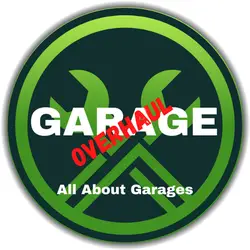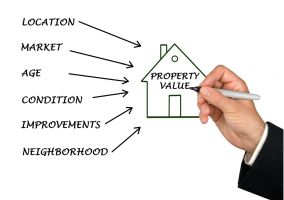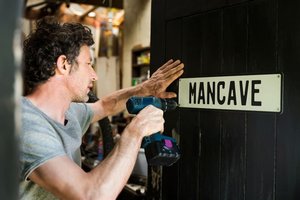Garage Maintenance (Complete Guide, Helpful Videos)
This post contains affiliate links.
Garages are often forgotten home areas and are only used to come and go or get something you need and get out. But garage maintenance is as important task as any home maintenance. Maybe even more so because garages can turn into dangerous places if mistreated and left uncared.
The garage door and opener might start malfunctioning, and different critters could move in. Garage maintenance is not difficult, and it’s fast and easy to inspect and maintain a garage, especially when the space is clean and organized.
As whole maintenance includes inspecting the entire garage, washing the door, tightening up the hardware, testing safety features, cleaning the tracks, checking the rollers, cables, weatherstripping, and lubricating all the moving parts. Maintaining the opener and lubricating the springs. And replacing broken parts.
Keeping the garage clean, organized, and regularly maintained saves time, money and keeps the garage safe.
We also look at the garage tune-up and how much it costs.
Garage Maintenance Checklist
- Inspect Garage Floors, Foundation, and Walls for any damage
- Wash the Garage Door
- Inspect the Garage Door and mend any damage
- Tighten up the Garage Door Hardware
- Test the Garage Door Balance and Safety Features
- Test the Auto-Reverse Safety Feature
- Clean the Garage Door Tracks
- Inspect the Garage Door Rollers and change if necessary
- Inspect the Garage Door Cables and call an expert if necessary
- Inspect the Garage Door Weatherstripping and change if necessary
- Garage Door Lubrication – Lubricate every moving part
- Garage Door Opener Maintenance – adjust the chain or belt if needed and lubricate if necessary. Change the battery, too, if required.
- Garage Door Spring Maintenance – Lubricate the springs if needed.
Garage Floors, Foundation, and Walls
Routinely inspect the whole garage from ground to ceiling for any sign of damage or malfunction. Look for signs of moisture or unusual smells. Check the floor for cracks or peeling. Especially bare concrete floors will wear and tear over time.
Concrete can be sealed for easier maintenance of the floor. Other options for garage floor are paint, epoxy, concrete stain with sealing. You can also cover the floor with different types of tiles or roll-out flooring.
Check the walls and ceiling for water damage during periods of heavy rain. Check the windows and side door too, if you have them. A fresh coat of paint will help if everything else is in good condition.
If the windows and doors are uneven or get stuck, the garage foundation has settled and requires an expert to inspect it.
- Read all about different types of garages here.
Garage Door Maintenance
Garage doors need regular maintenance, and you should observe the door through the year once a month. Check that the door moves smoothly and silently. If the movement starts to be jerky and the door makes scraping or grinding noises. Then something is wrong and needs attention.
Inspect also that both sides of the whole system look symmetrical—the tracks, cables, springs, and pulleys.
The garage door and opener should be inspected and maintained thoroughly at least once a year or twice a year if the usage is heavy.
Regular maintenance keeps things in working order before something goes wrong, and the garage door and opener will last longer. You will save money and time.
Wash the Garage Door
The garage door should be washed regularly with any mild cleaner. You could do it at the same time as you wash your car. Do not use a pressure washer at full strength as it can damage the door surface. Rinsing the door with a hose is safest. Wooden doors should only be wiped.
If you want to do a complete garage clean up read how-to in here.
Inspect the Garage Door
Examine the door for chipped or peeling paint. Wooden doors can have water damage or warping.
If steel door has rust spots, They need to be sanded, primed and painted. Small holes can be patched with an automotive body filler kit(paid link).
Wooden doors need regular maintenance. You can patch small holes with wood filler(paid link). Sand and paint or stain as required.
- Read all about fixing garage door panels here.
- Read all about different types of garage doors here.
- Read how to paint the garage door here.
Tighten up the Garage Door Hardware
The garage door faces lots of movement and vibration. The average door moves up and down more than a thousand times a year. Check all the hardware on the door, like tracks, rollers, and hinges. Tighten all the bolts with a socket wrench.
Test the Garage Door Balance
Garage doors need to be correctly balanced to ensure proper operation of the door and the door opener.
- Disconnect the opener from the door with the emergency release cord. (usually red with a handle).
- Now manually move the door halfway up and release it.
- The door should stay put and not open or close by itself. If it does, the garage door springs need to be adjusted. Spring adjustment can be dangerous and should be left to experts.
Test the Auto-Reverse Safety Feature
These both safety features are essential and need to be working correctly. You can test them in the following ways:
Test the Automatic Reverse
- Place a piece of wood, prick, or something similar on the garage floor in the path of the door.
- Activate the door to close.
- When the door closes on the object, the door should reverse immediately.
- If the door does not reverse. Disconnect the door from the opener and use the emergency release to separate the door from the opener (this way, you can still operate the door manually) and contact a professional to check the door.
Test the Door Sensors
- Locate the door sensors on both sides of the door.
- Activate the door to close.
- Use a broom or something similar and wave it in front of the sensors—test at least 3 points in the sensor’s path.
- The door should immediately reverse.
- If the door does not reverse. Disconnect the door from the opener and use the emergency release to separate the door from the opener (this way, you can still operate the door manually) and contact a professional to check the door.
You can clean the sensors with mild cleaner and cotton swab or soft cloth.
Inspect the wires going from the sensors to the opener and wall button for any external damage. If there is damage, contact experts or change the wires DIY if you know-how.
- Read all about garage door sensors here and how to adjust them.
- Read all about typical garage door and opener problems here.
Clean the Garage Door Tracks
Clean the tracks thoroughly where the rollers touch the track. This means in the horizontal section the bottom section of the tracks. And in vertical sections, both inside sections of the tracks.
You can use automotive brake cleaner or grease cleaner(paid link) for filthy tracks.
You can also check that the tracks are plumb with a spirit level and make minor adjustments if necessary.
Check the video for guidance.
Inspect the Garage Door Rollers
Check the rollers for wear, cracking, and chipping. Damaged rollers need to be replaced as soon as possible. Replacing the rollers is easy. You just remove and reinstall any roller brackets that are not directly attached to the cables.
Changing the bottom roller brackets on each side of the door attached to the cables is a job for professionals. Do not try it if you don’t have the skills to do so. The cables are under extreme tension and are very dangerous.
The rollers can be made of plastic, steel, or nylon. The plastic rollers only last a couple of years and should be changed to steel or nylon ones. Nylon rollers are the quietest.
Look for rollers with sealed bearings so they don’t need regular lubrication. Exposed bearings need to be lubricated regularly.
- Plastic Rollers – Low quality and last only a few years. These don’t have ball bearings. Change them for better ones.
- Steel Rollers – Durable and very long-lasting (15-20 years) but noisy.
- Nylon Rollers – Quiet, durable ( 12-20 years), the best option. Look for ones with sealed bearings. Some cheap ones don’t have any bearings at all.
If you’re interested in changing the rollers yourself you can find them on Amazon
Inspect the Garage Door Cables
Check the lift cables for broken strands and check them for any damage near the bottom roller bracket and pulleys. The cables connect the door to the springs that help lift and lower the door.
Changing the cables can be dangerous and should be left to the experts.
Inspect the Garage Door Weatherstripping
Weatherstripping makes the door sealed and keeps the elements, critters, and dust away from the inside of the garage.
- Open the garage door and check the weatherstripping on the bottom of the door. You can use a clamp to hold the door up. If the stripping is brittle, cracked, or anyway damaged, change it.
- Weatherstripping (Also called a U-shaped astragal sometimes) is made from rubber and sold by the foot at home improvement and hardware stores.
- Measure how much you need and insert the new weatherstripping into the groove/channel of the door. You can use little oil or silicone to help it to move into place.
- Weatherstripping for wooden doors is usually nailed in place.
Inspect also the weatherstripping around the door. If it is damaged, contact a professional to change it out or replace it DIY.
If you’re interested in changing the weather stripping yourself you can find them on Amazon
Garage Door Lubrication
Lubrication should be done twice a year to ensure proper and silent operation of the garage door. It takes very little time and is easy to do. Do not use regular WD40 because it’s not designed for heavy usage of garage doors.
Use white lithium grease(paid link) for everything except the garage door tracks. Aerosol greases are the easiest to inject lubricant into small places.
Lubrication List:
- Hinges – Lubricate the hinges
- Rollers: Sealed rollers don’t need lubrication. If the bearings show and are unsealed. Lubricate the bearings. In both cases, always lubricate the roller metal rod attached to the hinge.
- Tracks – You can lubricate the tracks with silicone spray. Use only silicone spray and avoid any oil or grease products to prevent dust buildup. Also, low temperatures make some oils thick and dense. First, close the door, lubricate the horizontal section of the tracks, open the door, and lubricate the vertical sections.
- Springs – Lubricate the springs and bearing plates.
- Locks – Lubricate the armbar and locks to make it easier to manually lock the door.
Garage Door Opener Maintenance
If your garage door opener is chain or belt operated, you may need to adjust and tighten the chain or belt sometimes. There may be too much slack, and the chain especially starts to make loud noises when operating the door. Check also that the unit sits surely at the ceiling mounting.
Watch the video on how to tighten the chain properly.
Test the Garage Door Opener Battery
If your garage door opener has a battery backup, you should test it once a year.
- Unplug the opener.
- Try to operate the door with the wall button.
- If the door does not work, the backup battery needs to be replaced with a new one(paid link).
If your opener is chain operated, the chain is usually lubricated for life at the factory and doesn’t need to be lubricated. If the chain looks dry, you can and should lubricate it.
Do not use any kind of lubrication to the belt-operated opener.
If your opener is screw operated, it usually needs to be lubricated once or twice a year.
Adjustment and lubrication details are usually found in the owner’s manual. If you don’t have one, check the manufacturer and model on the opener label and search online for the manual.
- Read all about garage door openers here and how to adjust them.
- Read all about typical garage door and opener problems here.
Garage Door Springs Maintenance
Garage door springs need to be lubricated regularly to avoid corrosion and friction and keep the springs operating correctly.
Silicone and Teflon(paid link) products are the best lubricants for garage door springs. Avoid oil, WD40, and greasy products. Greasy products tend to attract dirt that causes friction.
Lubricate the garage door springs a couple of times a year as you maintain the rest of the door.
- Read all about garage door springs here.
How Often Do Garage Doors Need Maintenance?
Garage doors and openers have lots of moving parts and need to be maintained regularly. Performing regular maintenance will keep the door operating for many years, and you avoid changing any parts prematurely.
Garage doors and openers should be inspected and maintained thoroughly at least once a year or twice a year if the usage is heavy. Lubrication should be done twice a year. Garage doors need regular maintenance, and you should observe the door through the year once a month for signs of any wear, tear, or malfunction.
Can I Use WD40 to Lubricate Garage Door?
Basic WD40 should not be used for garage door lubrication. The WD40 manufacturer has specialized products for garage doors.
Basic WD40 is a household lubricant made of mineral spirits and oils and is intended for lighter use than garage doors and should not ever be used for garage door lubrication. Always use lithium or silicone-based greases for garage door lubrication.
WD40 can be used to penetrate and free stuck rollers or hinges. Then wipe WD40 off and apply proper lubrication.
What Is Best For Garage Door Lubrication?
Best lubrication products for garage doors, openers, and springs are:
- White lithium grease spray
- Any special product made especially for garage doors
- Silicone sprays
- Teflon sprays
Avoid regular oil, vaseline, and degreasers.
Is Garage Door Tune-up Worth It?
Performing regular maintenance will keep the door operating for many years, and you avoid changing any parts prematurely.
If you are not a DIY person or don’t have the time, the garage door tune-up is worth it. Regular maintenance of the garage door will save you money in the long run. Garage doors and openers have many mechanical parts that move over a thousand times a year and need to be kept in working order to avoid excess wear and tear.
Getting a tune-up from garage experts ensures that the garage is safe. They perform a series of troubleshooting tests to find any fault in the door components or the opener, inspect and lubricate every component, and change them if necessary.
Get a tune-up once a year to keep the garage door working, problem-free and safe.
Read more about garage safety hazards here.
Signs Your Garage Door Needs a Tune-up
- Sounds – Grinding, scraping, any loud and unusual noises.
- Unsteady movement – the door and tracks shake, jerks or shudders.
- The slow movement of the door – something is in the way of the regular operation.
- Worn Parts – look for cracked, chipped, or worn-out parts.
- Bending – Door or tracks bend during usage. Stop using the door immediately and contact a professional.
Garage Door and Hardware Tune-up Cost
- Typical tune-up costs about $85-$100 Ranging from $75-$250
- The cost will rise from basic tune-up if something needs to be replaced
- Ask around your local experts to get the best deal.
https://www.homeadvisor.com/cost/garages/repair-a-garage-door/






